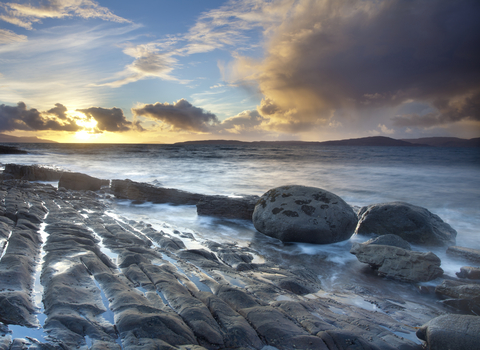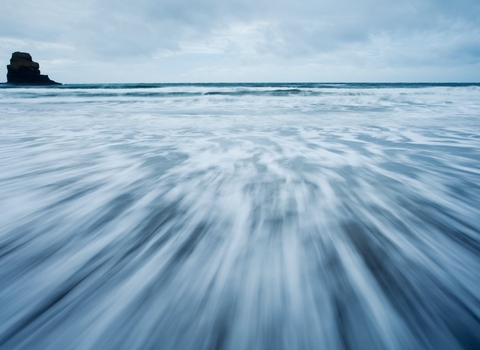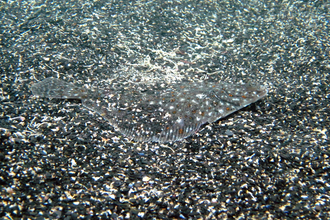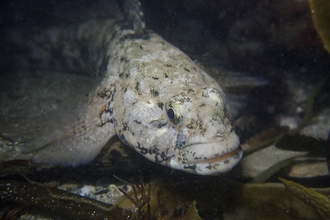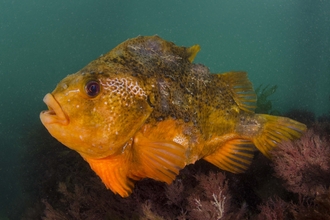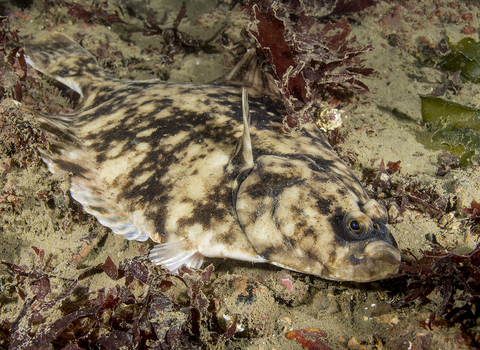
Flounder by Paul Naylor
European flounder
Able to camouflage itself to its surroundings, the European flounder is one of our many amazing flatfish!
Scientific name
Platichthys flesusWhen to see
January - December.Species information
Statistics
Up to 50cm long.Conservation status
Least Concern on the IUCN Red List of Endangered Species.
Habitats
About
Often found in coastal waters, including estuaries and sometimes freshwater, the European flounder is one of our many native flatfish! This flounder is able to camouflage its upper body to match the surrounding background.How to identify
Oval shaped flatfish, which can grow up to 50cm long, with a small mouth, pointed snout and square cut tail. Colour varies from a dull brown to a greenish grey, with a white underside. It is usually right-eyed and its eyes lie to the right of the mouth. However this is not always the case which makes identification more difficult!Distribution
Common around all British and Irish coasts.Did you know?
Hybrid individuals have been known to occur through interbreeding between flounder and plaice!How people can help
If you eat fish then always choose sustainable, local fish. The Wildlife Trusts are working with fishermen, researchers, politicians and local people towards a vision of 'Living Seas', where marine wildlife thrives. Do your bit for our Living Seas by supporting your local Wildlife Trust or checking out our Action Pages.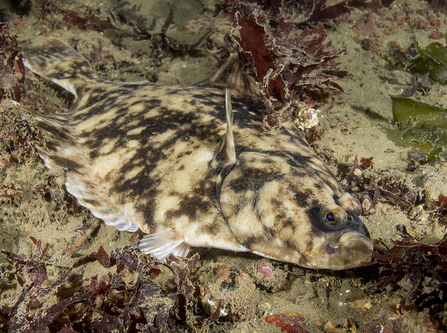
Flounder by Paul Naylor

